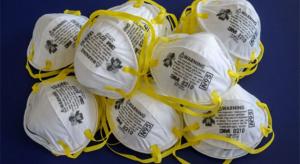All Features

Sébastien Breteau
As commercialization strategies evolve amid Covid-19, and supply chains continue to trend toward diversification, the only way for businesses to control their destiny is to double down on quality standards. If cash is king, then quality is the king’s closest confidant since high quality protects…

Jessica Ellspermann
How you communicate a message is as important as the message itself. When it comes to internal communications, this certainly holds true. Company culture can give your organization a major strategic advantage in these changing times. But what your culture consists of—goals, values, and practices—…

Amitava Chattopadhyay
For conventional, profit-seeking companies, moving into social impact carries huge contradictions. An ad hoc, small-scale initiative is an inexpensive way to do a bit of good and receive a nice warm glow in the process. But any attempt to achieve more serious impact through scaling the initiative…

Edward D. Hess
The times they are a-changing... and so is the nature of our work. As our familiar world crumbles around us (thanks, Covid-19), and technology continues snapping up more of the tasks humans have always done, we’ll need a whole new set of skills. If we want to stay employed and viable, we must…

Gleb Tsipursky
Does the phrase “garbage in—garbage out” (GIGO) ring a bell? That’s the idea that if you use flawed, low-quality information to inform your decisions and actions, you’ll end up with a rubbish outcome. Yet despite the popularity of the phrase, we see such bad outcomes informed by poor data all the…

Jon Speer
The medical device industry is one that requires preparation. Unlike less regulated industries, there’s an expectation in the industry around the possibility that an inspector or auditor can show up without notice and stop a business in its tracks.
That’s why, when Greenlight Guru released its “…

Hamza Mudassir
Disney has announced a significant restructuring of its media and entertainment business, boldly placing most of its growth ambitions and investments into its recently launched streaming service, Disney+. The 97-year-old media conglomerate is now more like Netflix than ever before.
What this means…

Steve McCarthy
The ideal of proactive quality has been the holy grail of chief quality officers in the life sciences industry for at least five years, but few, if any, have realized the vision. Industry has since set out a clear definition of the milestones a medical product manufacturer would need to meet in…

Sue Via
Research has shown that during economic uncertainty, companies that find a balance between reducing resources to survive and investing in key areas for growth will fare better through the recession and beyond. It’s a nuanced approach to playing offense and defense at the same time.
But many small…

Mike Figliuolo
A hypothesis-driven approach to problem solving and making recommendations can be tremendously efficient. You create a hypothesis (i.e., something taken to be true for the sake of argument), conduct analysis designed to prove or disprove the hypothesis, then make your recommendation based on the…

Ryan E. Day
Few phrases have more power to stir excited conversation than “American-made quality.” It’s been touted and trashed. It’s been a major cause for concern with offshoring and reshoring. Global conglomerate and startup incubator ROKiT Group has come down squarely in the camp that believes American-…

Jason Davis, Thomas Mannarelli
In 2017, Indonesian state-owned giant Pertamina had two ambitious strategic objectives: Transition from oil and gas to a more diverse portfolio, including renewables; and entrench itself deeper in the global market.
But there was a problem. Thanks to a remarkably low retirement age of 56 for…

Suneel Kumar
Remote auditing (RA) has become a norm during the Covid-19 pandemic. Remote auditing is one of the audit methods prescribed in ISO 19011:2018—“Guidelines for Auditing Management Systems.” Although RA has surged due to pandemic constraints, this method of operation will surely gain ground as a…

K. C. Morris
The Covid pandemic has highlighted the role that manufacturing plays in our society. Manufacturing is important not only for improving our quality of life but also for the necessities of life, from food to toilet paper to transportation and safe and secure housing. As our society has evolved, we…

Corey Brown
Amid the Covid-19 pandemic, 3M has been integral in maintaining domestic and international supplies of essential personal protective equipment (PPE). These production and supply-chain challenges required innovation to train new employees faster and leverage a culture of continuous improvement.…

Talmage Wagstaff
Preventive maintenance, specifically in production and manufacturing industries, has been a fundamental part of product consistency for years. It is well known that without product consistency, customer complaints and rework will soon be the result. What does preventive maintenance do to directly…

Sarah Burlingame
There is more to lean manufacturing than improving a few processes. Sustainable lean success requires a companywide culture of daily continuous improvement. Companies that develop their people to think scientifically, using facts and data to drive their decisions, are often the ones that achieve…

John Young
During the course of helping organizations and teams develop more effective ways of working, I have found that many of the obstacles to delivering value quickly to customers originate from mental models and assumptions that have been internalized. These mental models and assumptions largely exist…

Deborah Blumberg
In the summer of 2014, Aruna Ranganathan was doing postdoctoral research at a garment factory in Bangalore, India, when she noticed that some worker stations—but not all—were equipped with radio-frequency identification (RFID) technology, a tool used to quantify workers’ output.
Ranganathan, now…

Gleb Tsipursky
‘It’s not going away, and we have to face that reality.” That’s what the CEO and founder of a quality-centered high-tech manufacturing startup with 180 employees told the leadership team in early July 2020 to convince them of the need to do a strategic pivot to address Covid-19.
Previously, the…

Ryan E. Day
Metrology may sound like an esoteric dark art, but it isn’t. If you’re involved in manufacturing of any stripe, you’re almost certainly a metrology practitioner. Coordinate metrology, on the other hand, is a more narrow subset of the field but still widely used in many industries for various…

Eric Stoop
Data can transform manufacturing. It’s also a term that continues to prompt discussions within the industry. People have been saying it for years now, and there is plenty of empirical evidence: Data are the way forward in business generally and manufacturing in particular.
But right now, when…

Harish Jose
Today I’m looking at the “house” of the Toyota Production System (TPS). The illustration below shows the two pillars of the TPS house, jidoka and just in time (JIT).
I’ve been thinking about why jidoka and JIT are the two pillars, and why they’re not kanban or kaizen.
Jidoka was developed from the…

Mark Williams
One of the favorite aspects of my career in the insurance industry is delivering a positive outcome to someone in the midst of a personally challenging situation. Whether it’s giving someone the means to provide for care when health starts to fail, or a cushion to ease financial burdens after the…

Ryan E. Day
In our ultra-connected world, user experience (UX) can be a life-or-death matter for consumer-facing businesses. User experience is so critical that savvy leaders integrate UX/UI (user interface) design with product development and even consider UX when shaping business strategy. Madeline Fraser,…